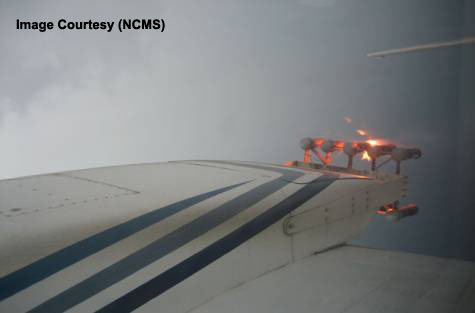ID :
301050
Mon, 09/30/2013 - 09:31
Auther :
Shortlink :
https://www.oananews.org//node/301050
The shortlink copeid
UAE: Harvesting rain through cloudseeding

The UAE, an arid country with low rainfall, is depending on scientific methods of cloud-seeding for rainfall to increase its underground water level and rain water collected in dams.
"We are trying to reach the best procedure to enhance the amount of rainfall to recharge underground water and increase rain collected in dams," said Ali Al Musallam, Head of the Cloud Seeding Operations Section at the National Centre of Meteorology and Seismology (NCMS).
Speaking to the English daily, Gulf News, Al Musallam said that the operation usually depends on the availability of convective or cumuliform clouds that tend to dominate over the summer. Clouds coming from Oman were targeted for the exercise.
Cloud seeding is a national project that has a permanent unit at the NCMS's meteorological department. It conducts operations anywhere in the UAE with the availability of amenable clouds, mostly along the eastern mountainous terrains.
The UAE's environment is most conducive for cloud seeding in summer. "It is due to the availability of amenable clouds ... [that] are usually convective and heaped in shape with good updraft," he added.
"We start our day with analysing the weather charts, we indicate the location and time of cloud accumulating, then we watch the satellite pictures to indicate the location of the beginning of cloud development. Then we target the base of the cloud by using the NCMS radar network to indicate a good updraft to start the seeding operation," said Al Musallam.
The NCMS team includes five pilots and seven cloud-seeding operators on the ground. Recent operations have been conducted in the Al Ain region and its surrounding areas, with a total of 124 operations since the beginning of this year, said the official.
Talking about the success ratio, Al Musallam said the rain fall enhancement ratio is more than 35 per cent in a clear atmosphere, while it is 15 per cent in a turbid atmosphere.
He said no harmful chemicals are used in the operation. "We use natural salt such as potassium chloride and sodium chloride. These salts are nothing in ratio when compared to their availability in the surroundings." The cloud-seeding programme, he said, began at the end of 1990, but at the beginning of 2001 it was conducted through a scientific base in cooperation with well-known organisations such as the National Centre for Atmospheric Research (NCAR) in Colorado, USA, Witwatersrand University in South Africa, in addition to NASA.
He said H.H. Sheikh Mansour bin Zayed al Nahyan, Deputy Prime Minister and Minister of Presidential Affairs, has played a vital role in the project, adding "He continuously guided and advised the Centre to cooperate with institutes and well-known centres that deals with cloud seeding research". – Emirates News Agency, WAM





